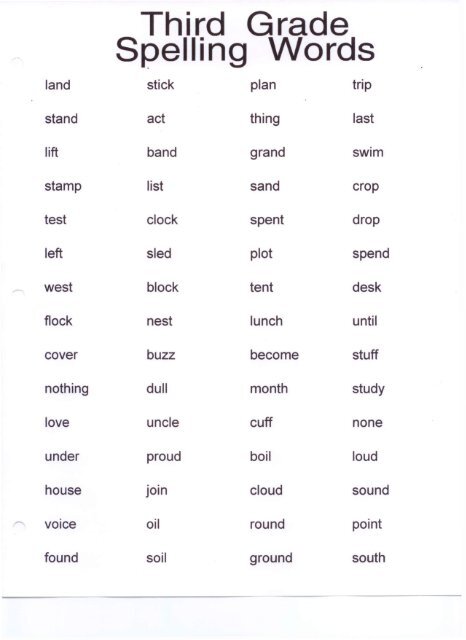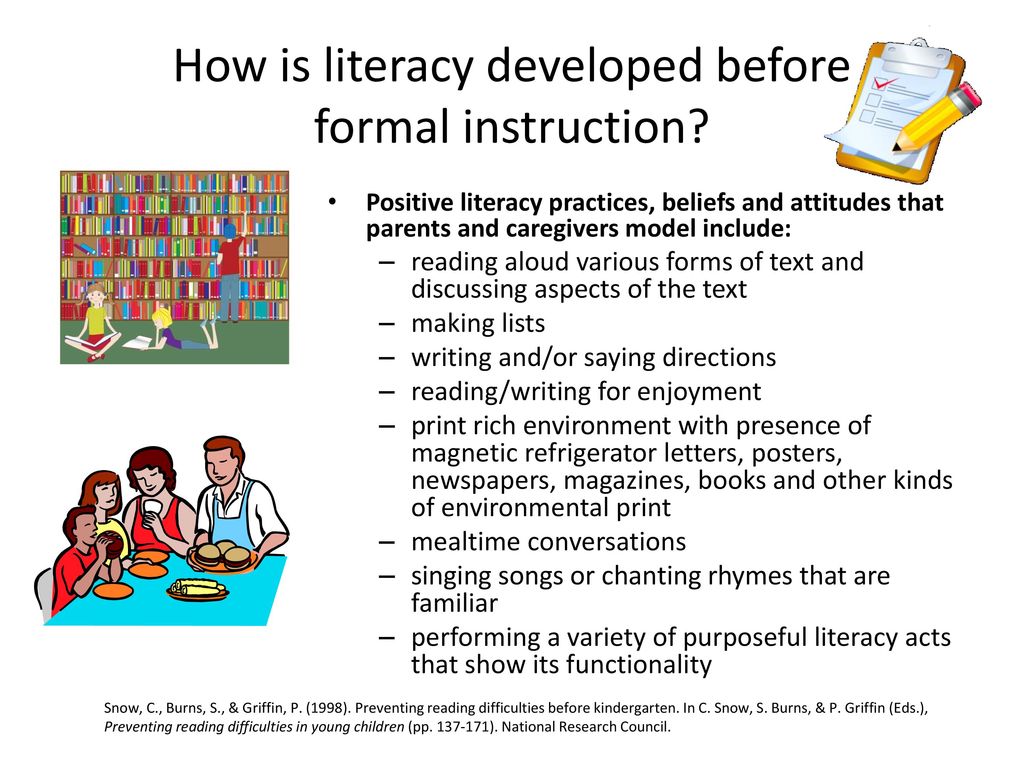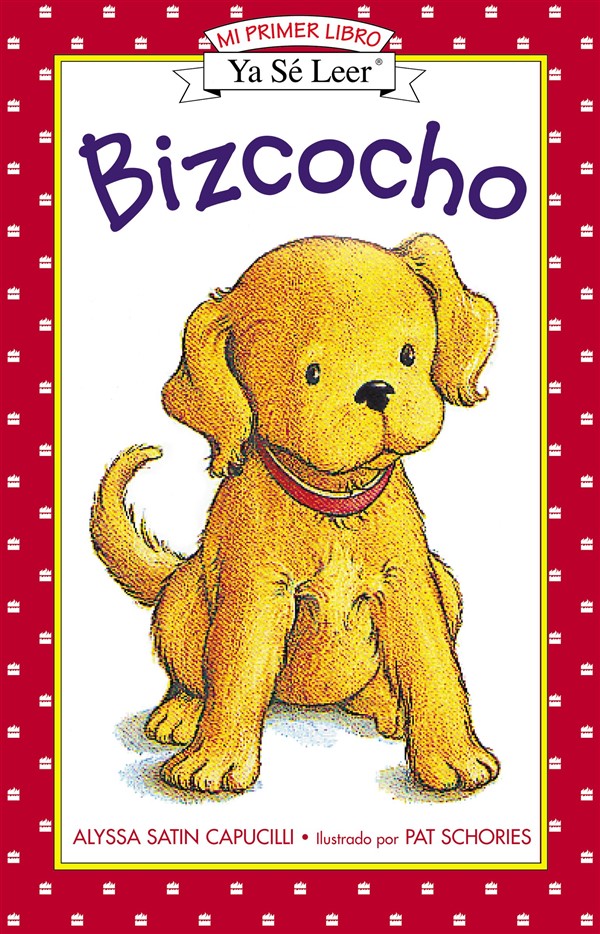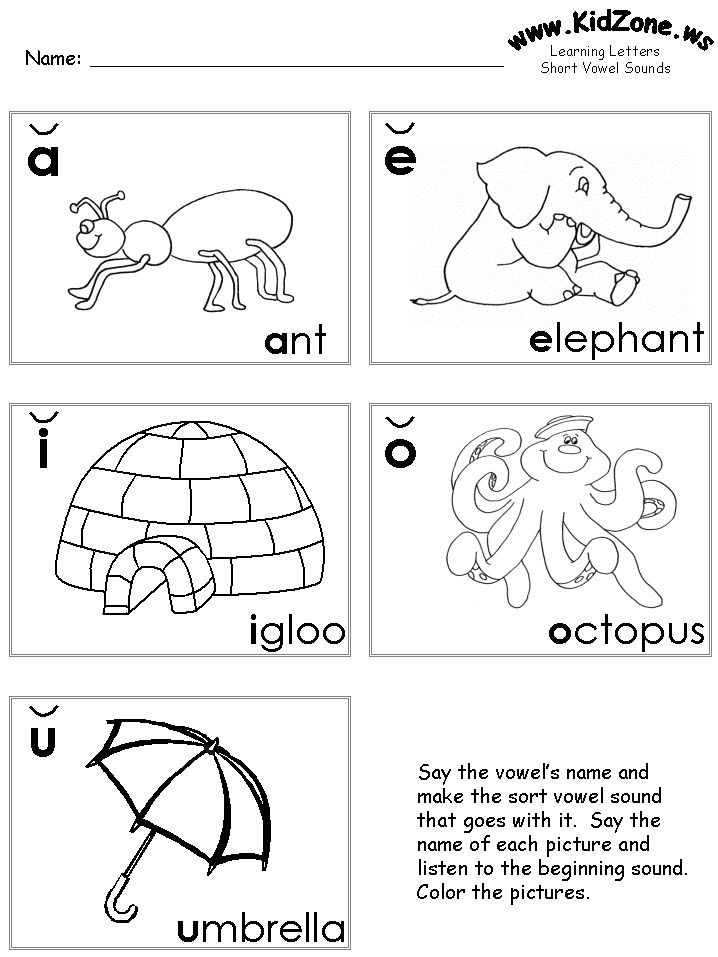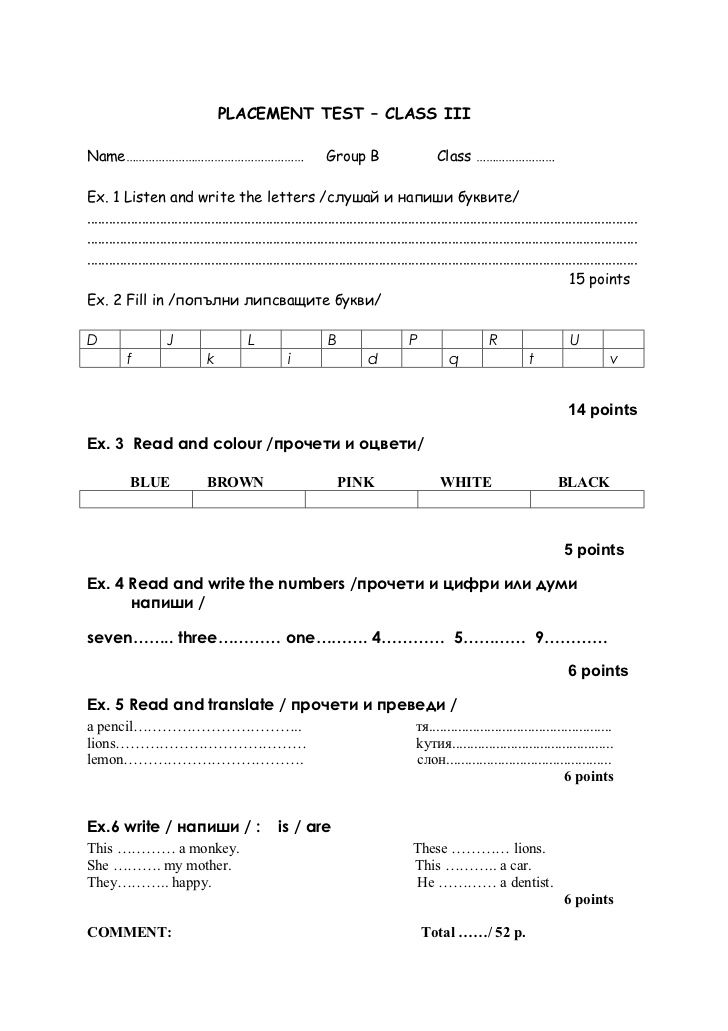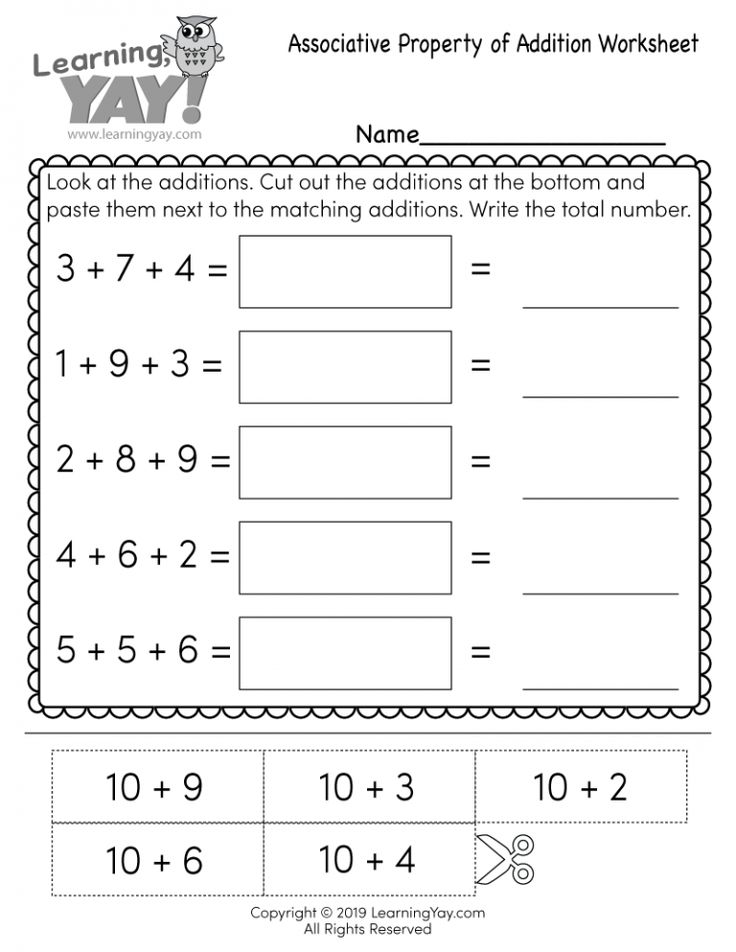List of high-frequency words
Fry Word List - 1,000 High Frequency Words
The Fry word list or "instant words" are widely accepted to contain the most used words in reading and writing. The sight words list is divided into ten levels and then divided into groups of twenty-five words, based on frequency of use and difficulty.
It is important for young readers to instantly recognize these high frequency words by sight in order to build up their reading fluency. It is also important for readers to practice words in meaningful context through phrase and sentence reading practice. As a follow up activity, students can practice writing short sentences including Fry words.
As you individually meet with the student, you’ll quickly be able to identify words that they are having trouble with. Also, as students write in their journals and read aloud, regular misspellings and misuse can provide you with a target list of words to teach first or spend more time on. Don't forget to check out all of our vocabulary worksheets and Dolch Sight Words.
This includes all 1,000 Fry Words from the 1st – 10th levels.
- Grade Levels:
- 2nd and 3rd Grade, 4th and 5th Grade, Grades K-12, Kindergarten & 1st Grade
Here’s the first level of the 1,000 Fry words.
- Grade Levels:
- Grades K-12, Kindergarten & 1st Grade
- CCSS Code(s):
- RF.K.3.C, RF.1.3.G
This page is the list of the third one hundred words on the Fry list.
- Grade Levels:
- 2nd and 3rd Grade, Grades K-12
- CCSS Code(s):
- RF.3.3.D
This is the second one hundred Fry words.
- Grade Levels:
- 2nd and 3rd Grade, Grades K-12
- CCSS Code(s):
- RF.2.3.F
The ninth one hundred words from the Fry list can be found here.
- Grade Levels:
- 4th and 5th Grade, Grades K-12
- CCSS Code(s):
- RF.4.3.A, RF.5.3.A
The Fry “instant word” list has these as the fourth one hundred words.
- Grade Levels:
- 4th and 5th Grade, Grades K-12
- CCSS Code(s):
- RF.
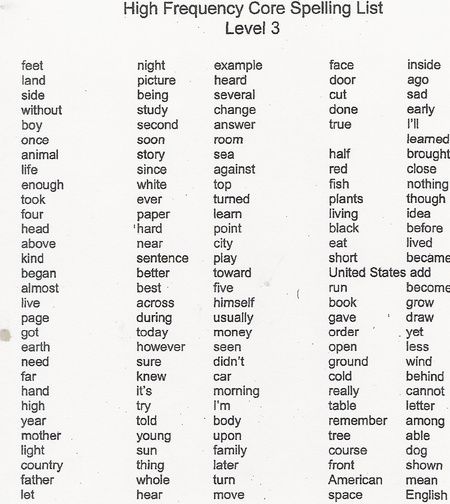 4.3.A, RF.5.3.A
4.3.A, RF.5.3.A
This is the final level of the Fry 1,000 word list, featuring the tenth one hundred words.
- Grade Levels:
- 4th and 5th Grade, Grades K-12
- CCSS Code(s):
- RF.4.3.A, RF.5.3.A
Here’s the fifth one hundred of the 1,000 Fry words.
- Grade Levels:
- 4th and 5th Grade, Grades K-12
- CCSS Code(s):
- RF.4.3.A, RF.5.3.A
This is the 6th level of one hundred words from the Fry word list.
- Grade Levels:
- 4th and 5th Grade, Grades K-12
- CCSS Code(s):
- RF.4.3.A, RF.5.3.A
Here’s the seventh one hundred words on the Fry “instant words” list.
- Grade Levels:
- 4th and 5th Grade, Grades K-12
- CCSS Code(s):
- RF.4.3.A, RF.5.3.A
This page has the eighth one hundred words from the Fry 1,000 word list.
- Grade Levels:
- 4th and 5th Grade, Grades K-12
- CCSS Code(s):
- RF.4.3.A, RF.5.3.A
High Frequency Sight Words - Keys to Literacy
The Keys to Literacy Blogby Joan Sedita | 1 January 5, 2021 | 7 Comments
Educators sometimes confuse the following related terms: sight words, high frequency words, decodable words, irregular words.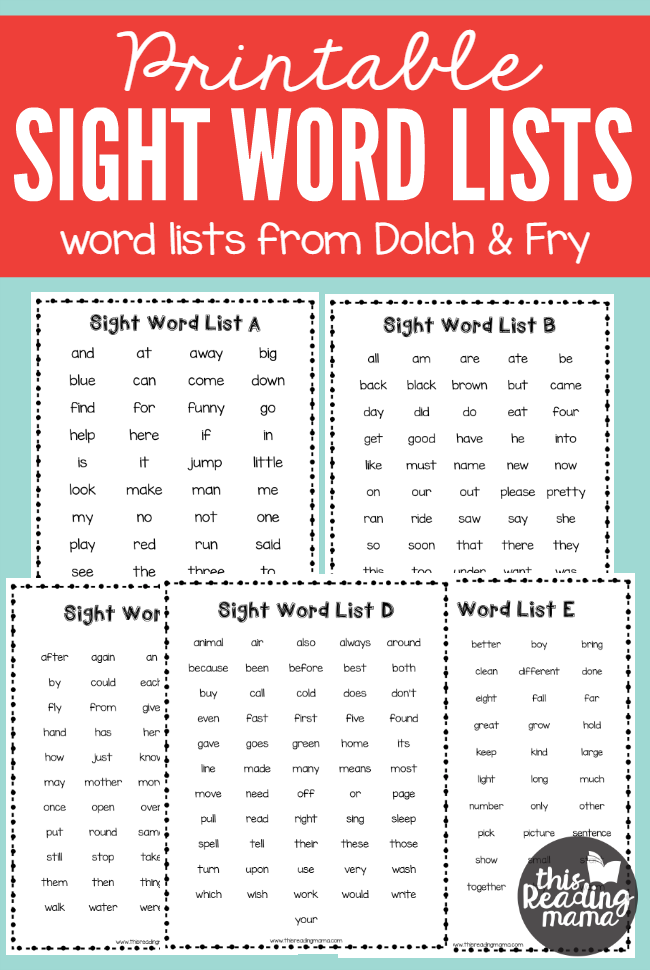 Sight words are words that are instantly recognized and identified without conscious effort. High frequency words are the words most commonly used in the English language. Because high frequency words are essential to learning how to read, teachers should begin to teach some high frequency words as sight words to children in primary grades at the same time children are being taught how to use phonics to decode words. Teachers introduce these words as soon as kindergarten if their students are ready.
Sight words are words that are instantly recognized and identified without conscious effort. High frequency words are the words most commonly used in the English language. Because high frequency words are essential to learning how to read, teachers should begin to teach some high frequency words as sight words to children in primary grades at the same time children are being taught how to use phonics to decode words. Teachers introduce these words as soon as kindergarten if their students are ready.
Some high frequency words are decodable – they can be “sounded out” using regular phonics concepts (e.g.,
in, and, had, that, him, did, then, with, down, at, on, can, like). Some high frequency words are irregular – they are not phonetic and must be read as a unique word (e.g., the, was, from, have, of, there, want, you, said, does). When a teacher introduces a new high frequency word, it is helpful to point out to children if it is irregular or if it is decodable using the phonics concepts the children have learned.
At first, high frequency words are the words young students learn to read by sight (e.g., the, what) along with words that are meaningful to each child (e.g., family names, name of their town). Over time, many words that young students read by applying decoding skills eventually become sight words – that is, students learn to read them automatically by sight through the orthographic mapping process.
There is no definitive list of which high frequency words should be taught at which grade level or at which time of year in a grade level. Reading programs typically incorporate some instruction of high frequency words into daily lessons. Teachers can also select words to teach from word lists such as the Fry 100 List (the 100 most common words used in English, ranked in order of frequency, Fry, 1980). See the list at the end of this post.
Instructional Suggestions
- Follow a consistent procedure for teaching students to read and spell a high frequency word that is multisensory and includes multiple exposures.
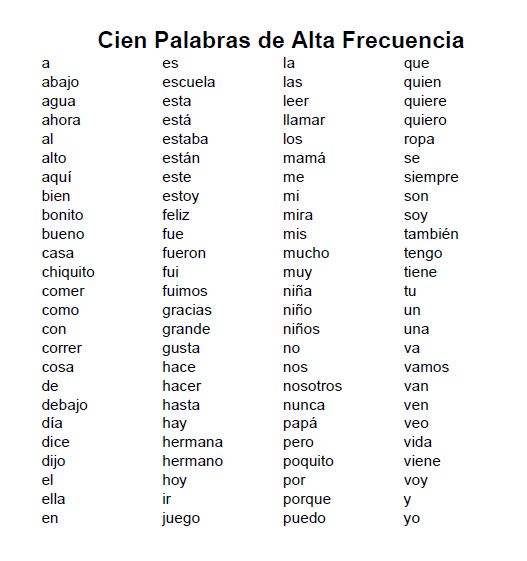 For example:
For example:
- Teach new high frequency words before students encounter them in text they are reading.
- Write the word on the board (or show it on a card) and spell it aloud pointing to each letter. Describe the parts of the word that are regularly spelled and the parts that are not.
- Students spell and trace the letter in the air (e.g., air writing) to support large muscle memory or on paper using two fingers to support fine muscle memory.
- Students cover the word and try to picture it in memory, then try to write it from memory.
- Students repeat steps 3 and 4 several times to develop automaticity to read and spell the word.
- Limit the number of words introduced at one time.
- Introduce visually similar irregular words, such as where and were or was and saw, in separate lessons to avoid confusion (Carreker, 1996).
- For irregular words, help students discover the parts of the word that do not represent their most common sounds.
 Circle or underline the irregular pattern (e.g., said, from) (Carreker, 1996).
Circle or underline the irregular pattern (e.g., said, from) (Carreker, 1996).
- Spiral back and review words that have been previously taught.
Resources:
- The Really Great Reading Company has a free resource “Heart Word Magic” for helping students learn sight words, especially those that are not decodable (irregular). This resource is a growing collection of 2-minute videos that review information about a sight word such as said, from, and have. They can be used in a virtual teaching situation. Click here to access.
- Read the article “A New Model for Teaching High-Frequency Words” (Farrell, Hunter, Osenga) at the Reading Rockets website.
- The website SIGHTWORDS offers a collection of instructional resources.
References:
Carreker, S. (1999). Teaching spelling. In J.R. Birsch (Ed.), Multisensory teaching of basic language skills.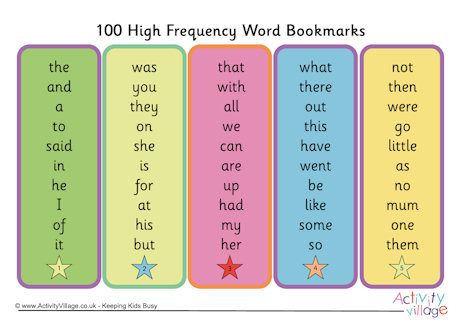 Baltimore: Brookes.
Baltimore: Brookes.
Fry, E. (1980.) The new instant word list. The Reading Teacher, 34(3), 284-289
Joan Sedita is the founder of Keys to Literacy and author of the Keys to Literacy professional development programs. She is an experienced educator, nationally recognized speaker and teacher trainer. She has worked for over 35 years in the literacy education field and has presented to thousands of teachers and related professionals at schools, colleges, clinics, and professional conferences.
« Semantic Mapping to Grow Vocabulary
What is adolescent literacy? »
Thematic dictionary of the English language: 3000 common words
Why do we need Dictionary 3000?
This dictionary contains 3000 common English words - this is the core of the vocabulary, the most necessary words that you need to strive to learn first. Words are divided into parts of speech and topics. You can also download the entire dictionary in one file.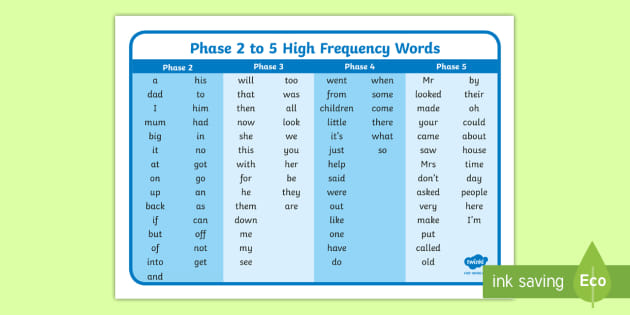
Contents of the Dictionary 3000
Verbs
- Stages of action, part and whole
- Movement
- Presence, absence, ownership
- Work, cooperation
- Feeling, thinking, perception
- Communication
- Wrestling
- Economics, business
- Man
- Home, life, entertainment
- Physical activities (general)
- Law
- Physical actions (human)
Nouns
- Nature
- Animals, plants
- Time
- Man
- Mathematics
- Physical phenomena, characteristics
- Materials
- Technique
- Space
- Logic
- Thinking
- Psychology, feelings
- Family
- Relationships
- Cooperation
- Painting, photography
- Cinema, theater, music
- Literature
- Religion
- Sport
- Communication
- Study
- Science
- State and society
- Army
- Economics, business
- Industry
- Job, career
- Professions, positions
- City
- Transport
- Law
- House, life
- Food
- Clothing
- Medicine
- Information technology
Adjectives
- Time
- Man
- Morality, behavior
- Variety
- Sensation, logic
- Quality
- Size, shape
- Physical qualities
- Money, quantity
- Importance, probability
- State and society
- Difficult-easy, ordinary-uncommon
- Space, nature
- Science, art
- Colors
Adverbs
Prepositions and conjunctions
Download Dictionary 3000
If it seems to you that 3000 words is too much, I recommend starting with Dictionary 500 - this is a short extract from Dictionary 3000 for beginners, the main one is selected from the main one.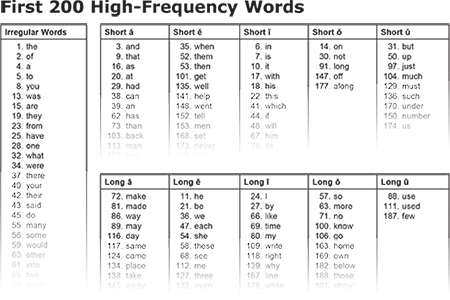
Why are there exactly 3000 words in the dictionary?
Linguists believe that the basis of the vocabulary in the English language is approximately 2000 - 3000 words.
- The 1000 most common words cover 78-81% of written text.
- 3000 words - about 85% of the text.
- 6000-7000 words - 90% of the text.
It turns out that the first 3000 words in terms of frequency of use give an understanding of 85% of the text, and the second 3000 words add only 5%. Each next thousand words adds much less than the previous one. This is because less common words (those not in the top 3000) are rare. Therefore, it is believed that for the speedy learning of the language, it is most effective to learn the most common 2000-3000 words, and then replenish vocabulary by reading and listening to original materials: news, fiction, films, radio, etc.
What counts as one word in English?
Speaking of vocabulary, scientists understand one word not as a single word, but as a vocabulary family (word family) - the central word (headword) plus its derivatives, which are formed with the help of endings, prefixes and suffixes.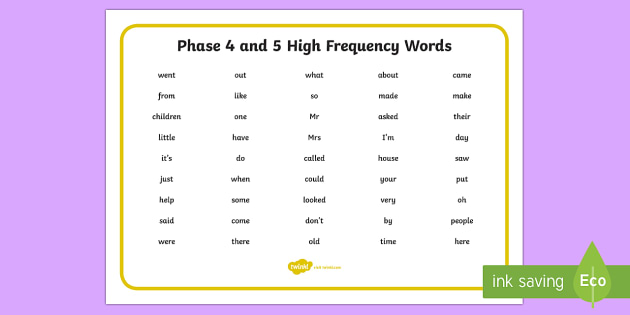
It is enough to know the basics of grammar and patterns of word formation in order to make burner (burner) or burnable (combustible) from the word burn (burn). Dictionary 3000 contains 3000 central words. Knowing the features of word formation, you will understand not only these 3000 words, but also all their derivatives.
Will I become fluent in English after learning these 3,000 words?
Vocabulary is a very important, but not the only component of language proficiency. The knowledge of the words alone will give you only the knowledge of the words. To master the language, you need knowledge of the basics of grammar and practice in speech activity (it includes reading, listening, speaking and writing).
In my book How to Learn English I call this combination the language formula:
Language proficiency = (vocabulary + grammar) × practice in 4 types of speech activity.
Vocabulary 3000 is a short way to build vocabulary.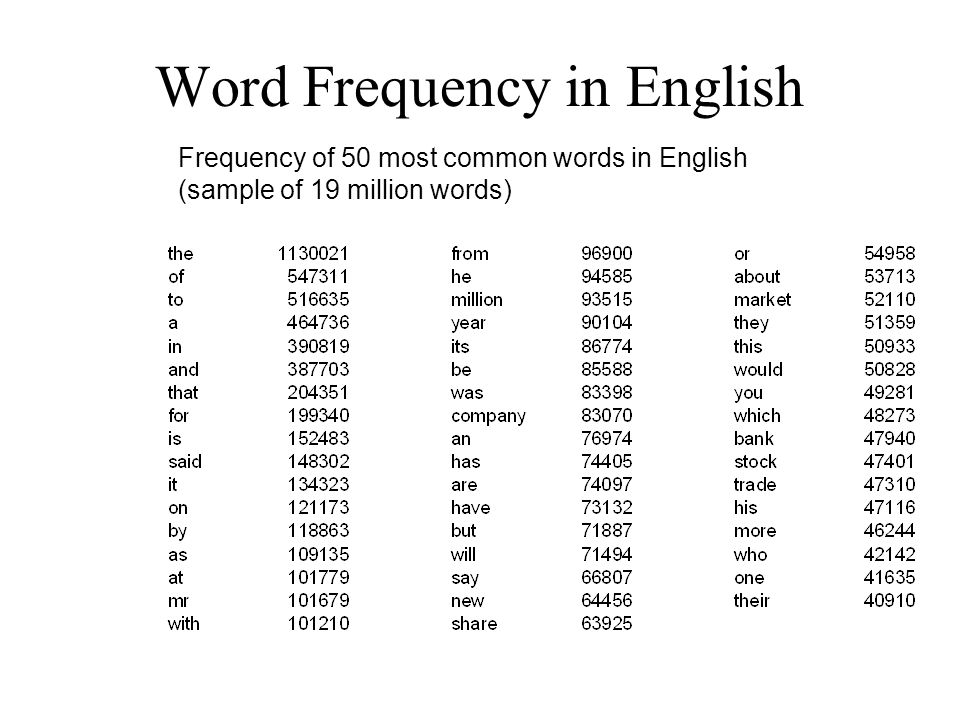 He does not ask for more.
He does not ask for more.
Hello! My name is Sergey Nim, I am the author of this site, as well as books, courses, video lessons in English.
Subscribe to my Telegram channel to learn about new videos, materials in English.
I also have a YouTube channel where I post my videos regularly.
We collect all negative keywords in a few minutes. Step-by-step algorithm for quick parsing in Key Collector — Marketing on vc.ru
{"id":13752,"url":"\/distributions\/13752\/click?bit=1&hash=af466d4ea1e6191d9c27c24e115adb6e6917e79c5bf33eeb7fd4b114", u0418\u043d\u0432\u0435\u0441\u0442\u043b\u0438\u043a\u0431\u0435\u0437 \u043f\u043e \u0440\u044b\u043d\u043a\u0430\u043c \u00ab\u0434\u0440\u0443\u0436\ u0435\u0441\u0442\u0432\u0435\u043d\u043d\u044b\u0445\u00bb \u0441\u0442\u0440\u0430\u043d","buttonText":"\u0427\u0438\u0442\u0430\u0442", "imageUuid":"305dd450-7bdb-5439-9377-b237a6cdf1b0","isPaidAndBannersEnabled":false}
In the previous article, we talked about our approach to parsing and cleaning negative keywords for Yandex Direct campaigns. The method always shows its very high efficiency, for any niches and volumes of keywords. development time savings can reach tens of hours
The method always shows its very high efficiency, for any niches and volumes of keywords. development time savings can reach tens of hours
3227 views
In the same article, we will give step-by-step instructions and try to reveal in more detail all the nuances of the method.
We consider it necessary to mention before the instruction that the described algorithm is universal, but you should never forget about exceptions. Always evaluate the situation .. but personally we have not yet met a situation where this method of cleaning is completely inapplicable.
Step-by-step instructions for quick query cleaning and keyword parsing
For ease of perception and clarity, we will take as a basis the theme of the sale of sofas.
What you need for work:
- Key Collector - what is it and why, I hope no explanation is required
- Collected basic semantics - we plan to deploy our approach to the formation of the basis in the near future (quickly and efficiently)
- Mandatory familiarization with the previous article
Now let's get started. ..
..
1. Collecting the frequency of basic queries
1.1. Create a project and load the basic semantics into Key Collector
1.2. We collect the frequency of all phrases from the basic semantics
1.3. We select 3-5 high-frequency phrases in one direction. In our example, we consider a variant with three phrases (see screenshot)
2. Creation of a group with three high frequency requests
2.1. Create a group for selected high-frequency queries (let's call it "3 HF")
2.2. We add phrases to the “3 HF” group as follows: “word1 word1”, “word1 word2 word2” (see screenshot)
2.3. Creating a list of negative keywords "(1) general and junk"
2.4. Adding common minuses to the list of stop words (1). The common disadvantages that we use can be downloaded here
2.5. Now we parse the left column of Wordstat in the group with three high-frequency queries (3 high-frequency queries), given the list of stop words (1)
3. Group cleaning with three high-frequency requests (“3 HF”)
Group cleaning with three high-frequency requests (“3 HF”)
3.1. After parsing the "3 HF" group, we create a second list of stop words and call it: "(2) DO NOT delete". When cleaning "3 HF" in this list, we will add words that we do not add to queries and do not delete.
It is very important not to do the same job twice - when cleaning "3 HF", then when cleaning the main semantics.
This list will consist of words that will not be downvoted, but we do not plan to do direct targeting on them either. But, in general, everything remains at the discretion of the developer, and in each case the situation is different.
Example: "Buy Versailles sofa". We will add “Versailles” to the “(2) DO NOT delete” list so that when cleaning the main semantics, the word “Versailles” does not occur a second time.
In the "(2) DO NOT Delete" list, we add brands, models, sizes of sofas, etc. - there are more than 2,000 such words. When cleaning up the main semantics, we will not have to clean up these 2,000 words again.

3.2. We do a standard cleaning through the "Analysis of groups" and we add all "garbage" requests to the list of stop words "(1) general minuses", and requests not for targeting to the list "(2) DO NOT delete".
We will not analyze the cleaning process in more detail, there is a lot of information on the Internet on this subject
The parsing of the “3 HF” group and cleaning itself takes from 10-15 minutes. Yes, just. At the same time, about 90% of minuses in all basic semantics will fall into the list of “(1) common and junk”.
Of course, depending on the niche, the time may increase or decrease.
4. Parsing the main semantics
4.1. Create a third list of stop words "(3) for parsing only" and add to it all the negative keywords from the lists "(1) common and junk" and "(2) DO NOT delete"
4.2. We return to the group(s) with basic semantics and parse it(them) with a list of words "(3) for parsing only"
Basic semantics are parsed without junk queries and queries with brands, models, sizes, etc.


